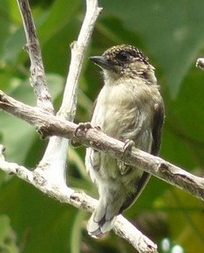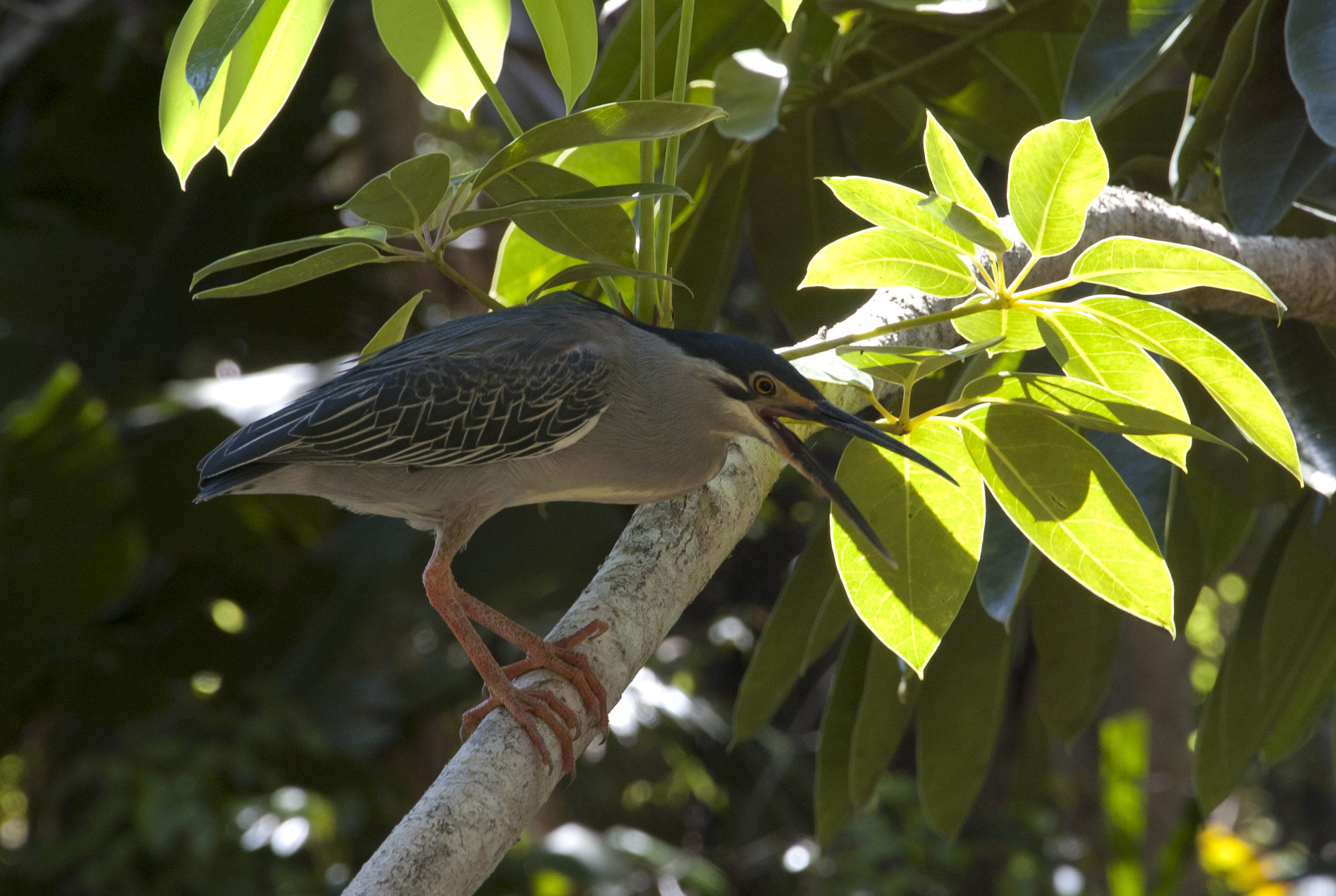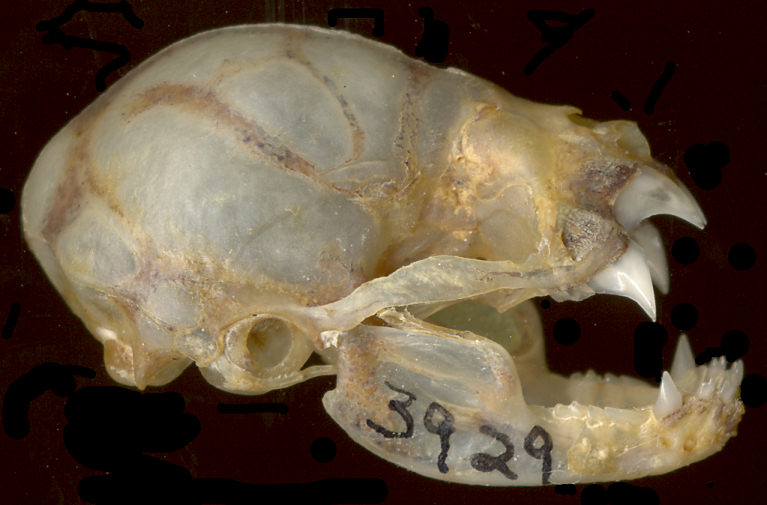|
Laguna De Sonso Nature Reserve
The Laguna de Sonso Nature Reserve is located in the Valle del Cauca Department of Colombia. It contains the last extensive remnant of original natural wetland remaining in the Cauca River Valley in western Colombia, and was declared a nature reserve in October 1978. It comprises a series of marshes and lagoons on the east bank of the Cauca River, between the municipalities of Buga, Yotoco and Guacari. It has an area of , lying at an altitude of . The wetlands are affected by the introduced water hyacinth. The reserve has been designated as a protected Ramsar site since 2017. Fauna Birds recorded from the reserve include the fulvous whistling duck, blue-winged teal, osprey, wattled jacana, black-necked stilt, cocoi heron, striated heron, anhinga and neotropic cormorant. Of special interest are the grayish piculet, apical flycatcher, bar-crested antshrike and the scrub tanager. The reserve also supports the only remaining population of the horned screamer in t ... [...More Info...] [...Related Items...] OR: [Wikipedia] [Google] [Baidu] |
Striated Heron
The striated heron (''Butorides striata'') also known as mangrove heron, little green heron or green-backed heron, is a small heron, about 44 cm tall. Striated herons are mostly sedentary and noted for some interesting behavioral traits. Their breeding habitat is small wetlands in the Old World tropics from west Africa to Japan and Australia, and in South America and the Caribbean. Vagrants have been recorded on Oceanic islands, such as Chuuk and Yap in the Federated States of Micronesia, the Marianas and Palau; the bird recorded on Yap on February 25, 1991, was from a continental Asian rather than from a Melanesian population, while the origin of the bird seen on Palau on May 3, 2005 was not clear. This bird was long considered to be conspecific with the closely related North American species, the green heron, which is now usually separated as ''B. virescens'', as well as the lava heron of the Galápagos Islands (now ''B. sundevalli'', but often included in ''B. stria ... [...More Info...] [...Related Items...] OR: [Wikipedia] [Google] [Baidu] |
Nine-banded Armadillo
The nine-banded armadillo (''Dasypus novemcinctus''), also known as the nine-banded long-nosed armadillo or common long-nosed armadillo, is a mammal found in North, Central, and South America, making it the most widespread of the armadillos. Its ancestors originated in South America, and remained there until the formation of the Isthmus of Panama allowed them to enter North America as part of the Great American Interchange. The nine-banded armadillo is a solitary, mainly nocturnalArmadillo Observation Msu.edu. Retrieved on October 17, 2013. Ksr.ku.edu. Retrieved on October 17, 2013. animal, found in many kinds of habitats, from mature and second ... [...More Info...] [...Related Items...] OR: [Wikipedia] [Google] [Baidu] |
Capybara
The capybaraAlso called capivara (in Brazil), capiguara (in Bolivia), chigüire, chigüiro, or fercho (in Colombia and Venezuela), carpincho (in Argentina, Paraguay and Uruguay) and ronsoco (in Peru). or greater capybara (''Hydrochoerus hydrochaeris'') is a giant cavy rodent native to South America. It is the largest living rodent and a member of the genus '' Hydrochoerus''. The only other extant member is the lesser capybara (''Hydrochoerus isthmius''). Its close relatives include guinea pigs and rock cavies, and it is more distantly related to the agouti, the chinchilla, and the nutria. The capybara inhabits savannas and dense forests, and lives near bodies of water. It is a highly social species and can be found in groups as large as 100 individuals, but usually live in groups of 10–20 individuals. The capybara is hunted for its meat and hide and also for grease from its thick fatty skin. It is not considered a threatened species. Etymology Its common name is derive ... [...More Info...] [...Related Items...] OR: [Wikipedia] [Google] [Baidu] |
Tapeti
The common tapeti (''Sylvilagus brasiliensis''), also known as the Brazilian cottontail, forest cottontail, or (formerly) simply tapeti is a species of cottontail rabbit. It is small to medium-sized with a small, dark tail, short hind feet, and short ears. As traditionally defined, its range extends from southern Mexico to northern Argentina, but this includes several distinctive population that have since been split into separate species. Under this narrower definition, the true tapeti only occurs in the Atlantic Rainforest of coastal northeastern Brazil and it is classified as "Endangered" by the IUCN. The American Society of Mammalogists concurs, but also tentatively classifies several distinct populations that have not yet received proper species names into ''S. brasiliensis'', and thus considers it to range from Venezuela south to Argentina. Taxonomy The species was first described scientifically by Carl Linnaeus in the 10th edition of Systema Naturae, published in 1753. Th ... [...More Info...] [...Related Items...] OR: [Wikipedia] [Google] [Baidu] |
Common Vampire Bat
The common vampire bat (''Desmodus rotundus'') is a small, leaf-nosed bat native to Latin America. It is one of three extant species of vampire bat, the other two being the hairy-legged and the white-winged vampire bats. The common vampire bat practices hematophagy, mainly feeding on the blood of livestock. The bat usually approaches its prey at night while they are sleeping. It then uses its razor-sharp teeth to cut open the skin of its hosts and lap up their blood with its long tongue. The species is highly polygynous, and dominant adult males defend groups of females. It is one of the most social of bat species with a number of cooperative behaviors such as social grooming and food sharing. Because it feeds on livestock and is a carrier of rabies, the common vampire bat is considered a pest. Its conservation status is categorized as Least Concern by the International Union for Conservation of Nature (IUCN) because of "its wide distribution, presumed large population toleranc ... [...More Info...] [...Related Items...] OR: [Wikipedia] [Google] [Baidu] |
Pallas's Long-tongued Bat
Pallas's long-tongued bat (''Glossophaga soricina'') is a South and Central American bat with a fast metabolism that feeds on nectar. Metabolism It has the fastest metabolism ever recorded in a mammal, similar to those of hummingbirds. Although it uses 50% of its stored fat over the course of a day, over 80% of its energy comes directly from the simple sugars that compose its diet of nectar, without being stored in any form. It will also feed on pollen Pollen is a powdery substance produced by seed plants. It consists of pollen grains (highly reduced microgametophytes), which produce male gametes (sperm cells). Pollen grains have a hard coat made of sporopollenin that protects the gametophyt ..., flower parts, fruit and insects. Tongue A 2013 study determined that their tongues have a mopping ability that is powered by blood, a phenomenon unique in nature. Elongated hairs at the tongue's tip, which normally lie flat, become engorged with blood when the tongue is pro ... [...More Info...] [...Related Items...] OR: [Wikipedia] [Google] [Baidu] |
Common Opossum
The common opossum (''Didelphis marsupialis''), also called the southern or black-eared opossum or gambá, and sometimes called a possum, is a marsupial species living from the northeast of Mexico to Bolivia (reaching the coast of the South Pacific Ocean to the central coast of Peru), including Trinidad and Tobago in the Caribbean, where it is called manicou. It prefers the woods, but can also live in fields and cities. Habitat and shelter This opossum is found in tropical and subtropical forest, both primary and secondary, at altitudes up to 2200 m. They use a wide range of nest sites. Most commonly they will create one in the hollow of a tree; however, they will also dig a burrow or nest in any dark location if nothing else is suitable (which often gets them in trouble with humans). Opossums enjoy denning underground, but do not spend as much time underground when it is dry season. Common predators of the opossum are humans, house pets (ex: dogs and cats), and birds. When t ... [...More Info...] [...Related Items...] OR: [Wikipedia] [Google] [Baidu] |
Horned Screamer
The horned screamer (''Anhima cornuta'') is a member of a small family of birds, the Anhimidae, which occurs in wetlands of tropical South America. There are three screamer species, the other two being the southern screamer and the northern screamer in the genus ''Chauna''. They are related to the ducks, geese and swans, which are in the family Anatidae, but have bills looking more like those of game birds. Taxonomy Already known in the 17th century, the horned screamer was described in 1766 by the Swedish naturalist Carl Linnaeus in the twelfth edition of his ''Systema Naturae''. He introduced the binomial name ''Palamedea cornuta''. The horned screamer is now the only species placed in the genus ''Anhima'' that was introduced by the French zoologist Mathurin Jacques Brisson in 1760. The specific epithet ''cornuta'' is the Latin word for "horned". The German naturalist Georg Marcgrave had used the Latin name ''Anhima'' in 1648 for the horned screamer in his ''Historia natur ... [...More Info...] [...Related Items...] OR: [Wikipedia] [Google] [Baidu] |
Scrub Tanager
The scrub tanager (''Stilpnia vitriolina'') is a species of bird in the family Thraupidae. It is found in Colombia and Ecuador. Its natural habitats are subtropical or tropical moist montane forests, subtropical or tropical high-altitude shrubland Shrubland, scrubland, scrub, brush, or bush is a plant community characterized by vegetation dominated by shrubs, often also including grasses, herbs, and geophytes. Shrubland may either occur naturally or be the result of human activity. It m ..., and heavily degraded former forest. References scrub tanager Birds of the Colombian Andes Birds of the Ecuadorian Andes scrub tanager Taxonomy articles created by Polbot Taxobox binomials not recognized by IUCN {{Thraupidae-stub ... [...More Info...] [...Related Items...] OR: [Wikipedia] [Google] [Baidu] |
Bar-crested Antshrike
The bar-crested antshrike (''Thamnophilus multistriatus'') is a species of bird in the family Thamnophilidae. It is found in Colombia and Venezuela. Its natural habitats are subtropical or tropical dry forests, subtropical or tropical moist montane forest Montane ecosystems are found on the slopes of mountains. The alpine climate in these regions strongly affects the ecosystem because temperatures fall as elevation increases, causing the ecosystem to stratify. This stratification is a crucia ...s, and heavily degraded former forest. References bar-crested antshrike Birds of the Colombian Andes Birds of Venezuela bar-crested antshrike Taxonomy articles created by Polbot {{Thamnophilidae-stub ... [...More Info...] [...Related Items...] OR: [Wikipedia] [Google] [Baidu] |
Apical Flycatcher
The apical flycatcher (''Myiarchus apicalis'') is a species of bird in the family Tyrannidae. It is endemic to Colombia. Its natural habitats are subtropical or tropical dry forests and arid and semi-arid open areas. Taxonomy The species was first described in 1881 by the English zoologist Philip Sclater. The genus name derives the Ancient Greek ''muia'' - fly, and ''arkhos'' - ruler or chief. The species name comes from the Latin ''apical'' - of the point or tip - in reference to the white tips of the bird's tail feathers. The species is monotypic, having no recognized subspecies. Description The apical flycatcher is a typical representative of the Myiarchus flycatchers: a slim, medium-sized bird with few really distinctive features. The bird is 18-19cm in length, with greyish-olive upperparts. The wings are dusky, with whitish fringes to the tertials and coverts showing as two faint wing bars. The crown of the head is brownish-olive. The bird's throat and breast are pale g ... [...More Info...] [...Related Items...] OR: [Wikipedia] [Google] [Baidu] |






